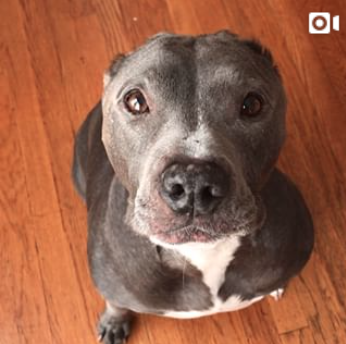Many people see a dog with a wagging tail and immediately think the dog is friendly and ready to play. Not so fast. While many times, yes, a friendly dog will be wagging his tail, it’s important to look at the context of the tail wagging and know a little about dog communication before you can assume. Here are some tips:
Tail Wagging
Happy Tail
A dog that is in a safe situation will wag excitedly in a variety of speeds and in a neutral, loose position (sometimes even in a circle!). He might even add a little hip waggle into it as well. You should know your dog well enough to determine when this is a happy, excited wag. But if you meet a strange dog, even if he’s wagging his tail, still ask the owner if it’s okay to approach.
Aggressive Tail
If a dog is feeling aggressive, he might hold his tail vertically and wag. This is not a “nice to meet you” wag. This is definitely a dog who is not feeling friendly and you should steer clear. High tails expose a dog’s anal glands which carry a scent for marking and in this position, he definitely wants you to know who’s boss.
Insecure Tail
A dog who is feeling trepidation about meeting a new dog or person may slightly wag his tail to show he’s feeling a bit nervous. Proceed with caution, here, with your own dog or if you are meeting someone else’s.
Other Types of Tail Communication
Alert Tail
When dogs are alert, their tail is up and so are their ears.
Not Sure But Ready For it Tail
If a dog is wagging his tail but suddenly stops and “freezes” he’s communicating that he may not like what’s going on anymore and is trying to send a message without being aggressive.
Curious Tail
A curious dog will typically hold his tail straight out.
Submissive Tail
A dog saying, “I don’t want any trouble” will hold his tail low and, depending on how scared or anxious he is, tuck it under his legs, also masking his scent-marking anal glands.
Some breeds might be harder to read, like pugs, whose tails are always curled up. And, some dogs don’t have tails! In these cases you need to pay attention closely to the situation and look for other cues like a dog’s body stance, for example.
Understanding a dog’s body language is important for all dog owners because it helps give a clue into what your pup is thinking. Remember, though, that all dogs are individuals and it’s important to know your own dog. Practice caution with other people’s dogs and keep an eye out for clues!
Happy tail deciphering!


Chris
Great article. Loved the video of the Pit Bull pup wagging his tail. What a sweeeeet baby! I know, I used to have a Pit mix!
Elizabeth Snyder-Baldonado
PRICELESS!!!!!
?????????
Bullbeasties are the SWEETEST, GOOFIEST, MOST LOVING & LOYAL DOGS…when they’re raised right; &, many times, even when they’re NOT.
No animal should be judged by its looks/breed alone(with the exception of body language!!!?), any more than a human ought to be.
Doggies, unlike us bonebrained bipedal types, aren’t very skilled at lying.
—unless it’s down.
The ChihuaRat who owns me has APPROVED this message. ?